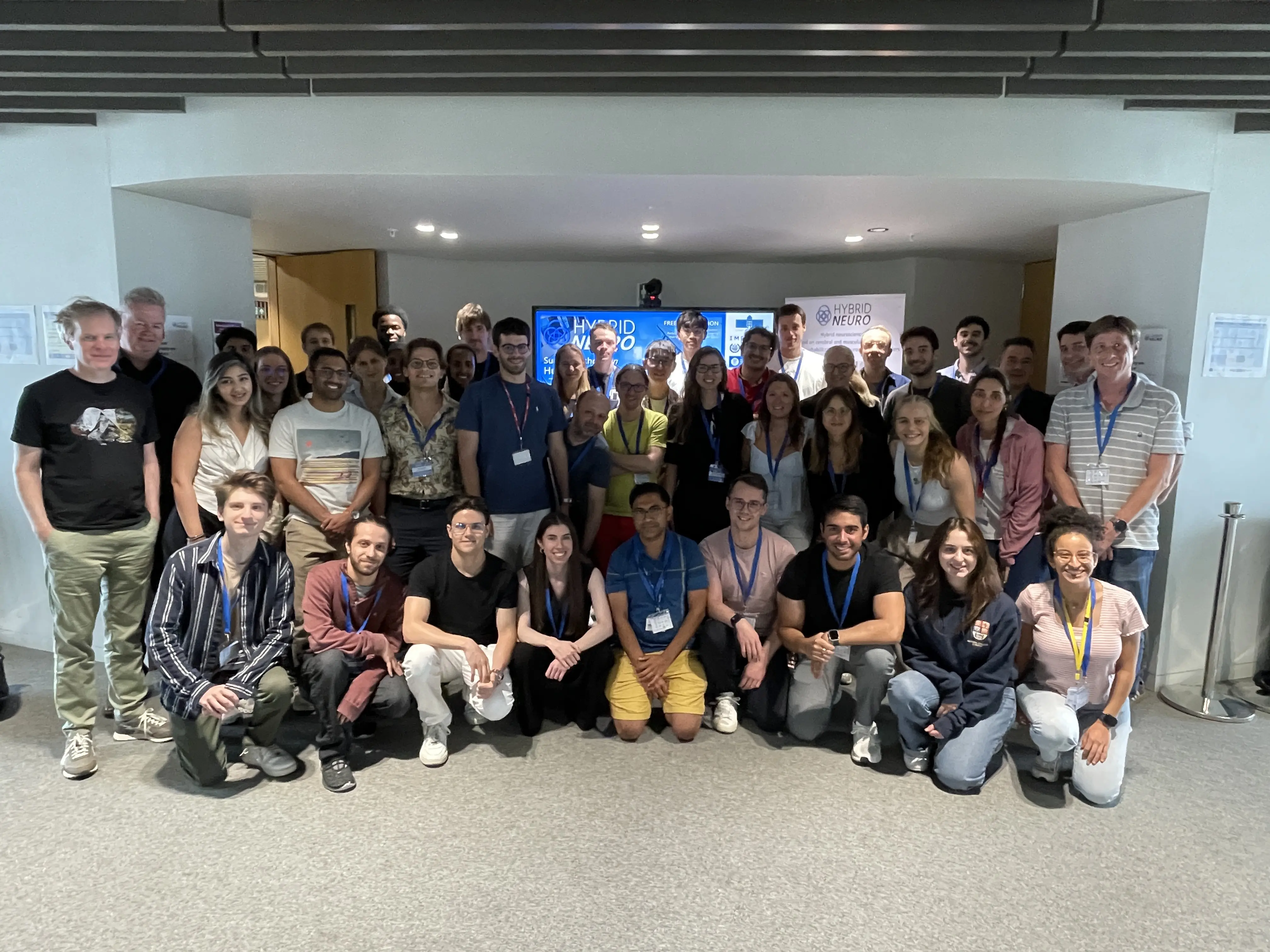Summer School on Human Interfacing and Augmentation at Imperial College London
At the end of June, the HybridNeuro Summer School on Human Interfacing and Augmentation kicked off at Imperial College London's White City campus. Over five intensive and inspiring days, the event brought together 50 in-person participants from more than 15 institutions, along with up to 40 more following online. The programme featured over 20 academic presentations, hands-on training sessions, and an industry-focused day with leading entrepreneurs and business professionals.
The summer school was formally opened by project coordinator Prof. Aleš Holobar, who welcomed participants and introduced the aims and scope of the HybridNeuro project. This was followed by a compelling keynote from Prof. Etienne Burdet (Imperial College London), who set the scene for the week with a talk on the fundamentals of augmenting the human body with technology and introduced game theory of human-machine interaction.
Each morning featured in-depth, didactic lectures delivered by experts at the top of their field in neural interfacing and motor control: Profs. Dario Farina (Imperial College London, UK), Aleš Holobar (University of Maribor, Slovenia), and Carsten Mehring (University of Freiburg, Germany). These sessions provided attendees with a deep dive into decades of pioneering research in neural decoding, motor unit decomposition, and augmentation technologies, and more.
Afternoon sessions included shorter, specialised lectures highlighting cutting-edge academic research. Speakers included Drs. Aritra Kundu (ICL), Juan Alvaro Gallego (ICL), Jaime Ibanez (UZ), and Ildar Farkhatdinov (KCL), who presented on novel approaches to augmentation, while Dr. Hayriye Cagnan (ICL) shared exciting work on tremor reduction through neuromodulation. A special session featured Dr. Mario Bracklein from META, who presented his team's impressive progress in developing a neural interfacing wristband.
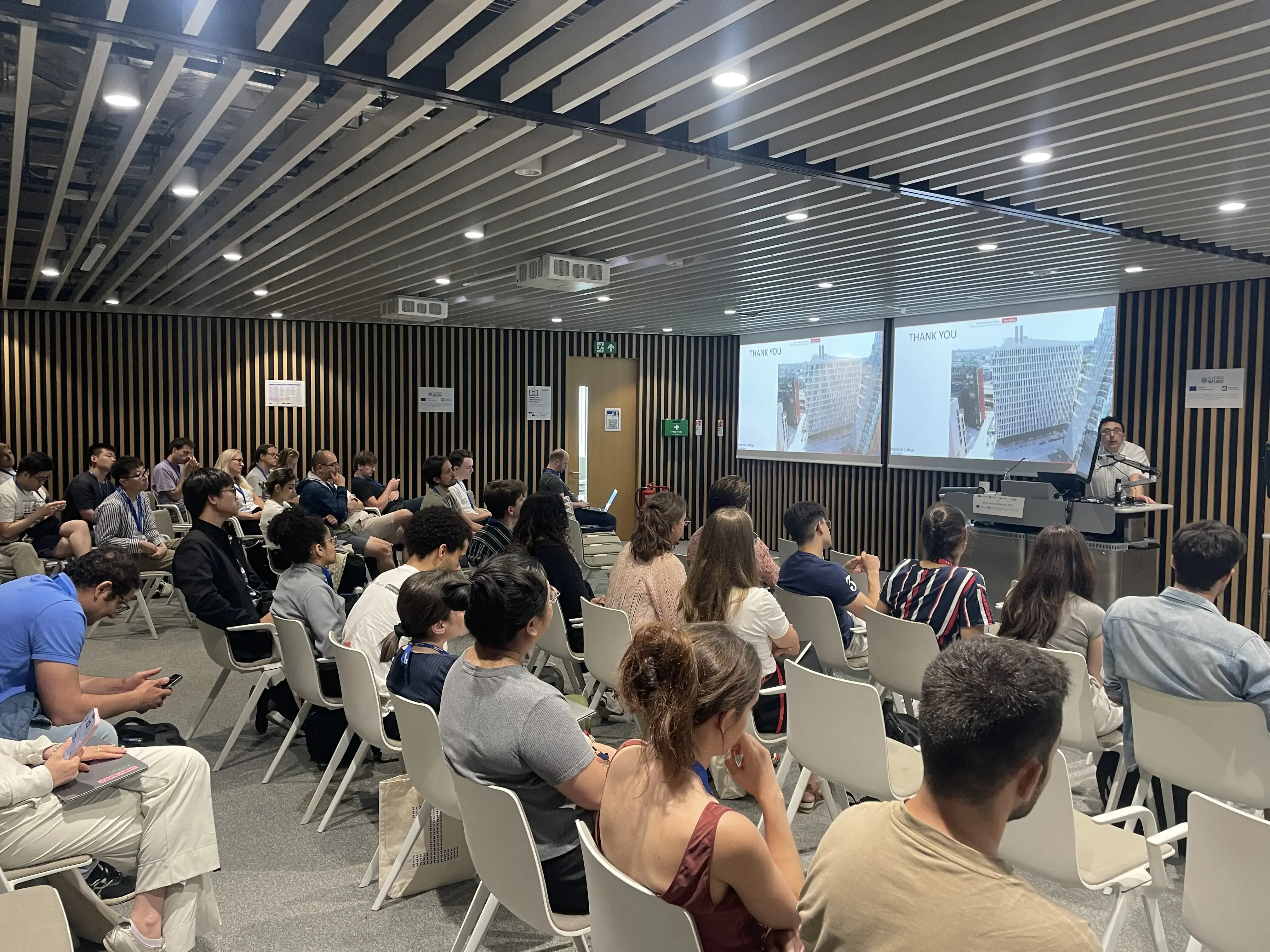
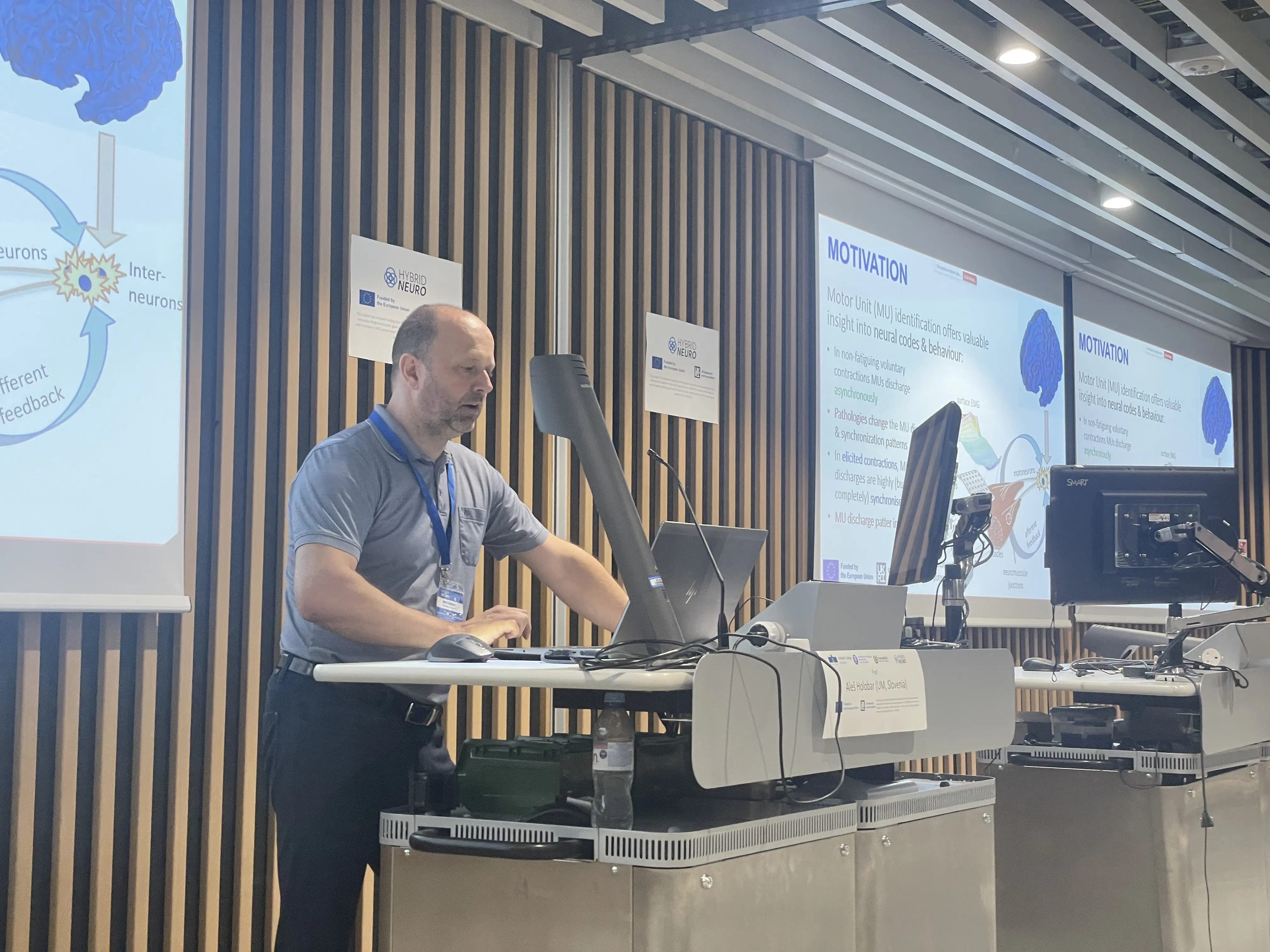
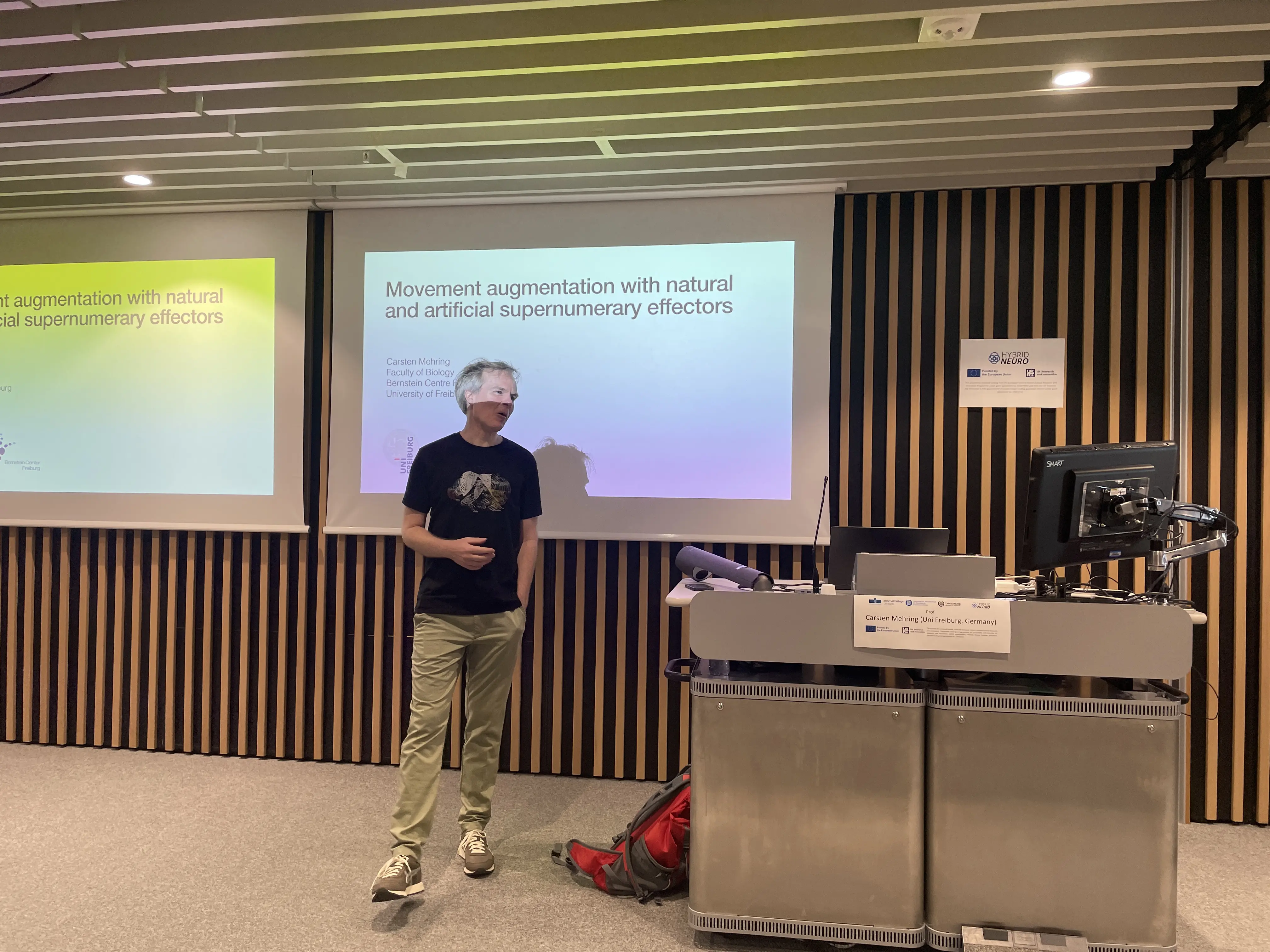
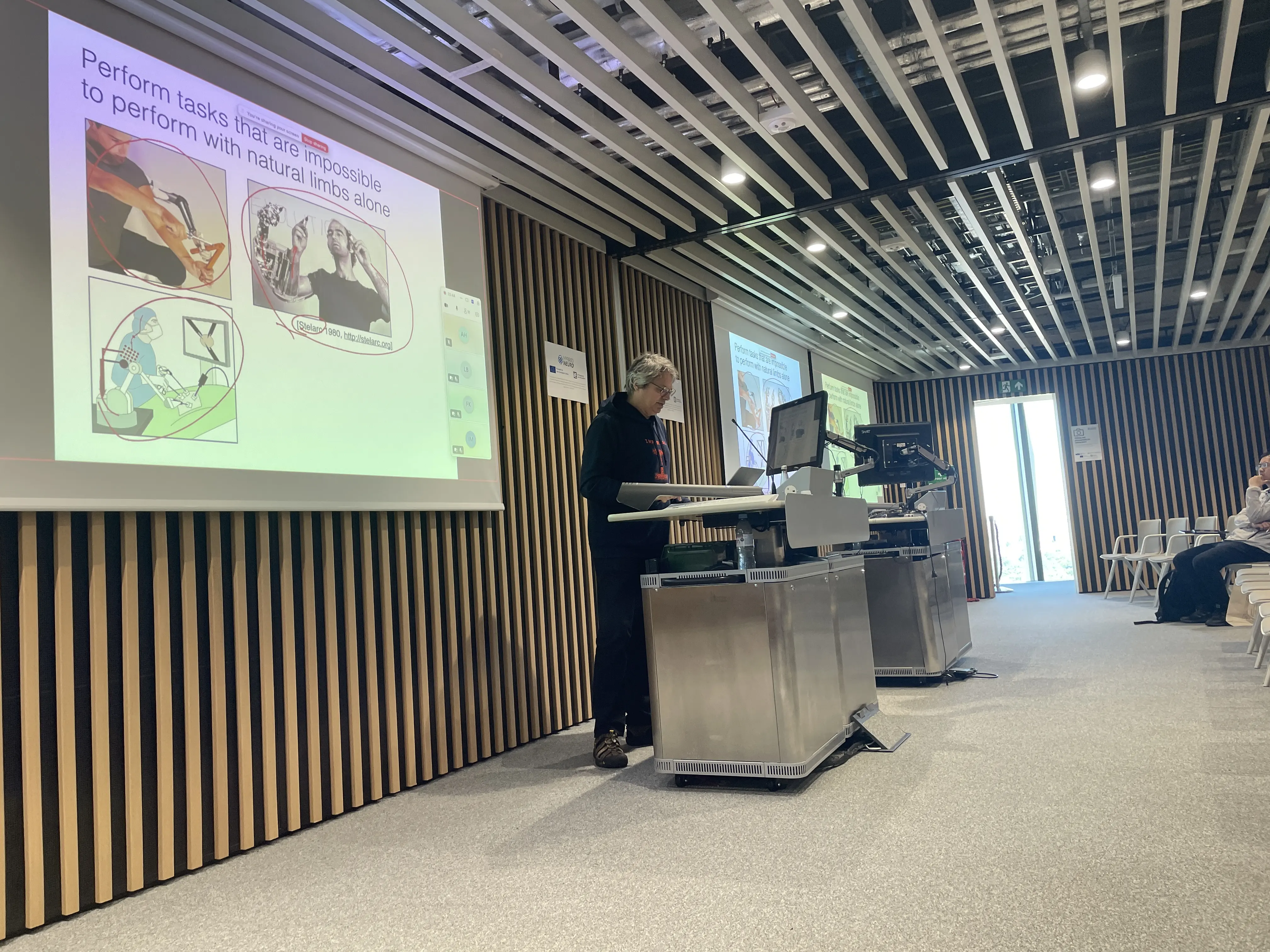
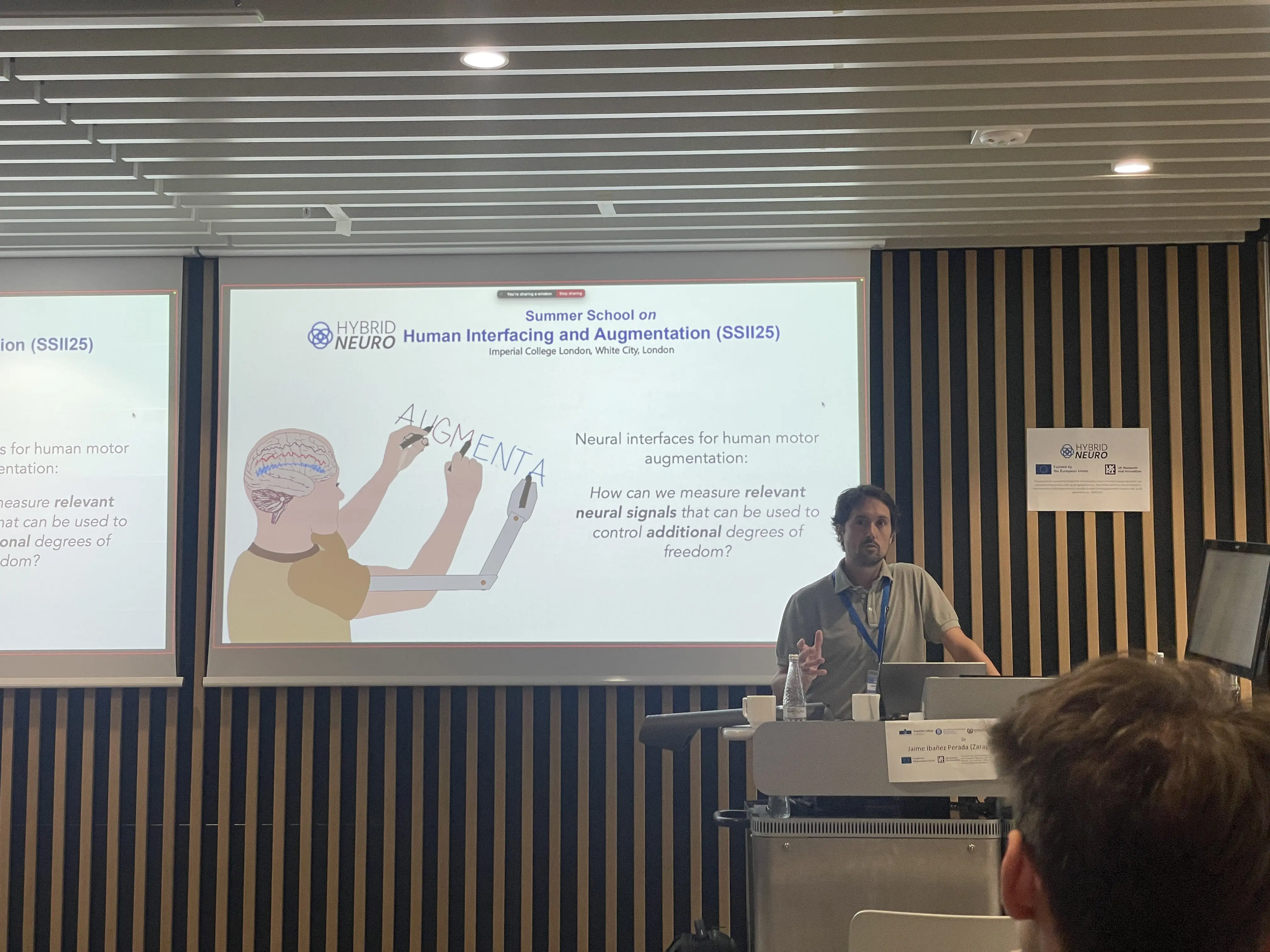
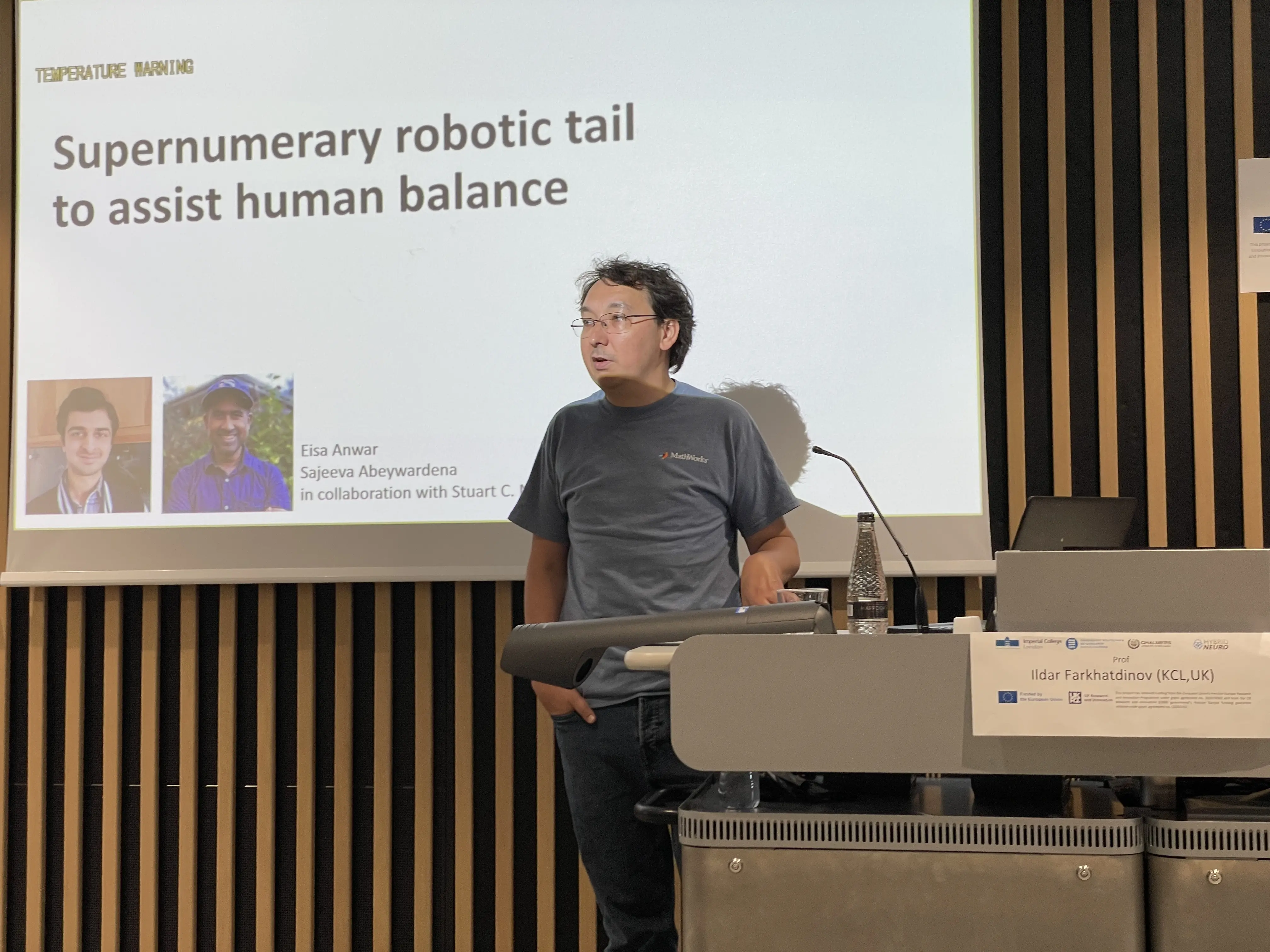
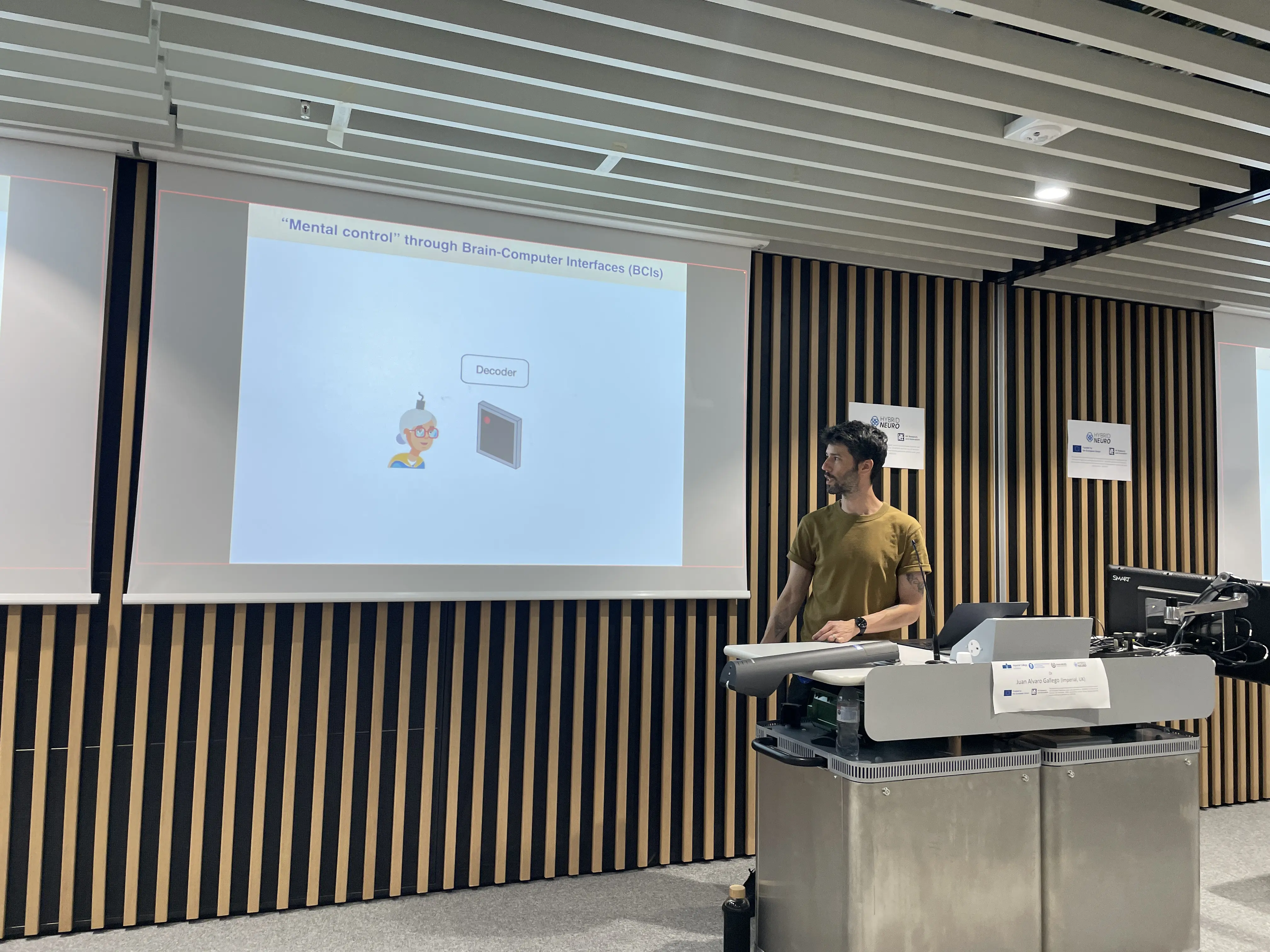
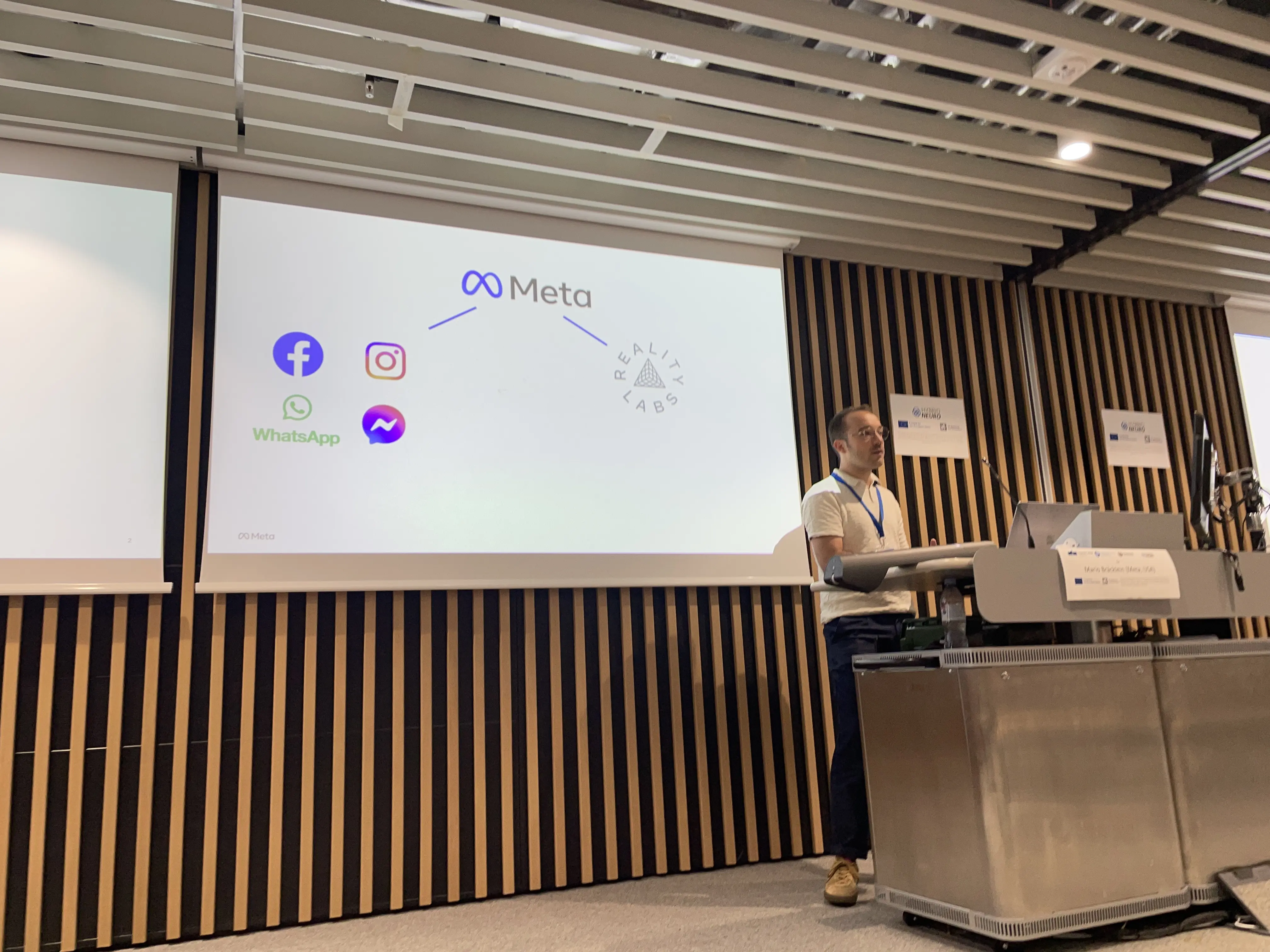
The summer school also provided a platform for emerging researchers to showcase their work. Presenters included Ciara Gibbs, Tristan Choo, Matteo Pizzi, Emanuele Abbagnano, and Natalia Torres-Consul from Imperial College London; Matej Kramberger from the University of Maribor; Elena Condominas Casanovas from UPC; and Bahareh Ahkami from the Chalmers University of Technology. Their contributions demonstrated the high quality and diversity of research across the consortium.

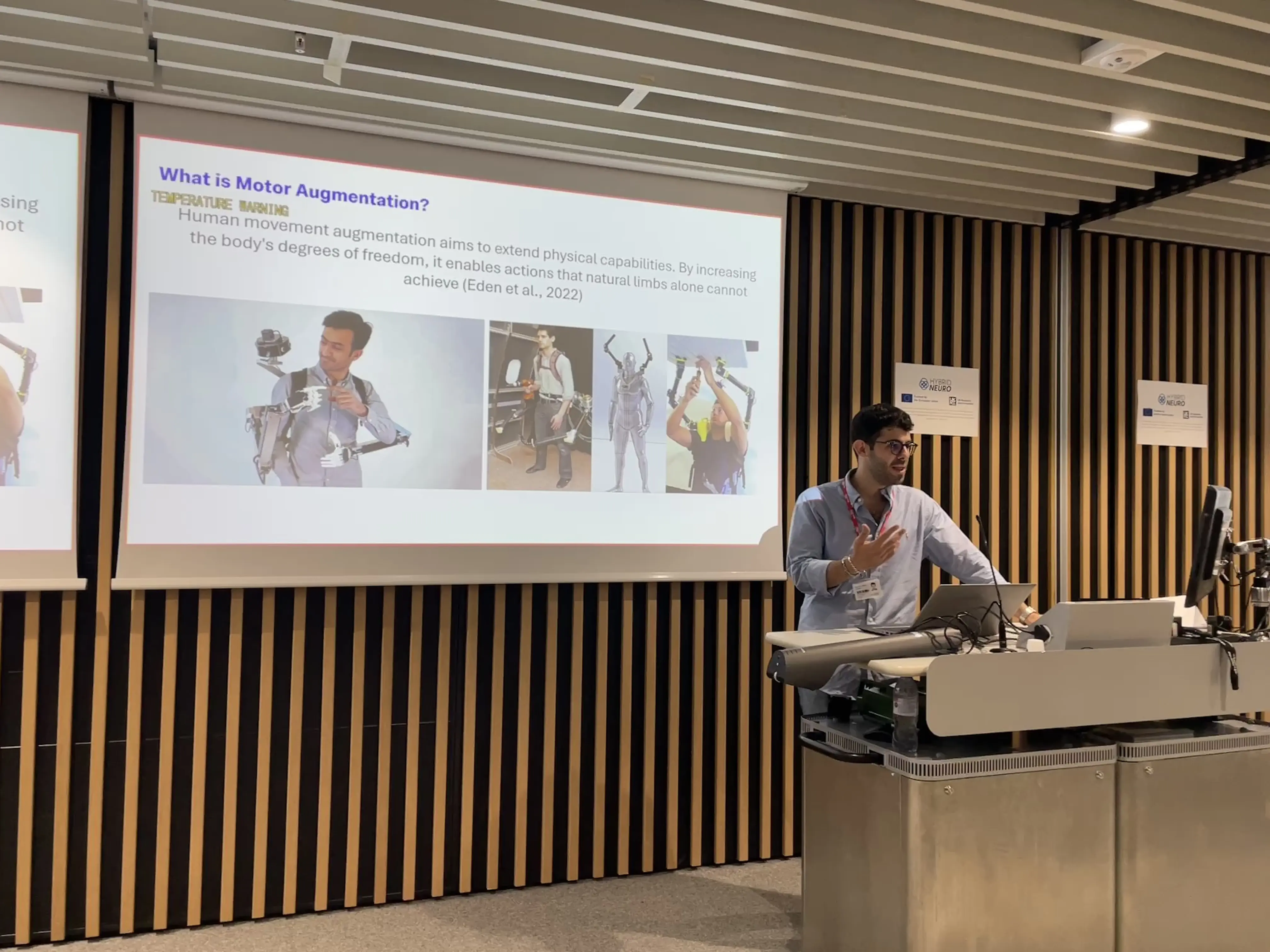
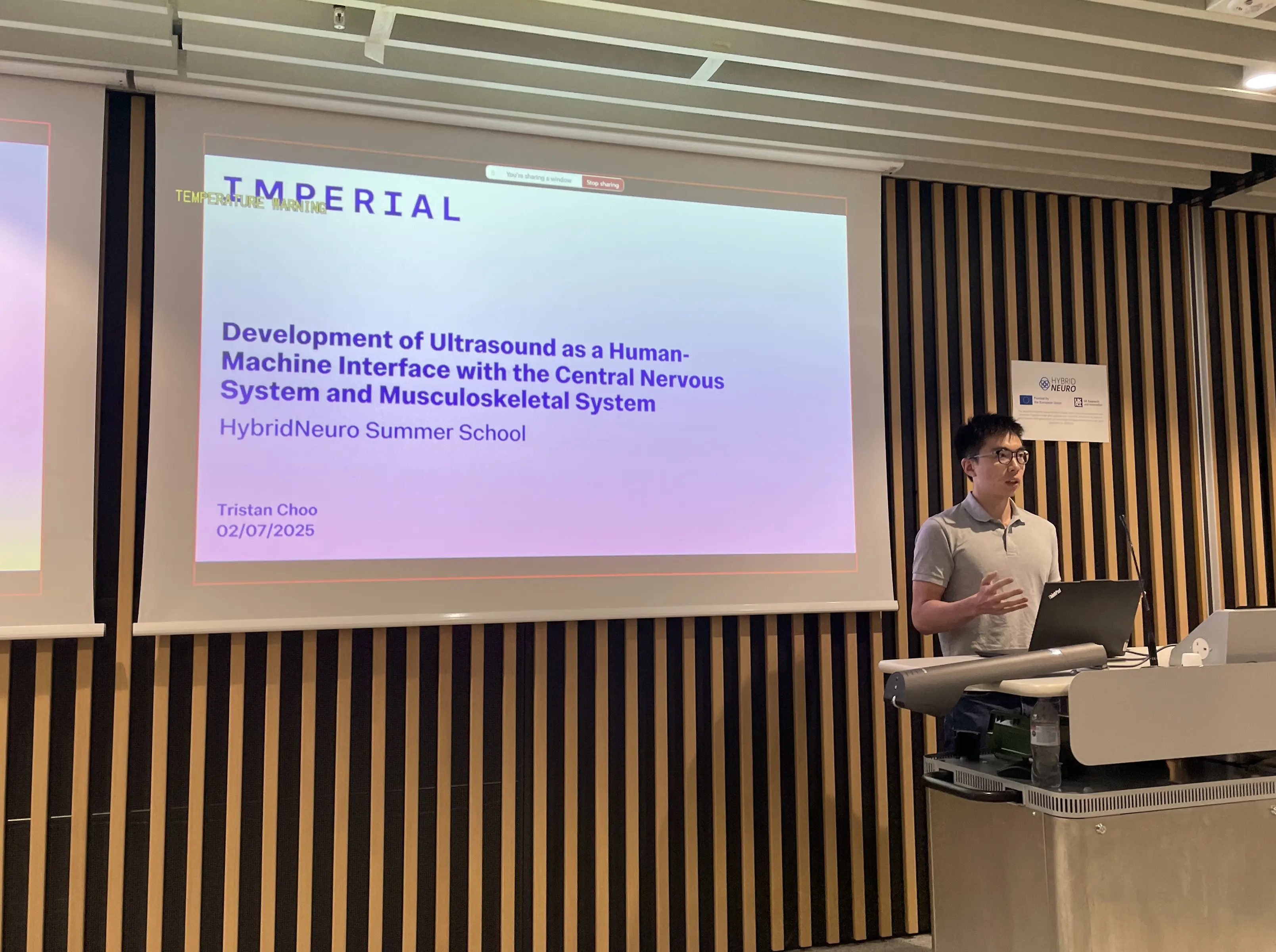
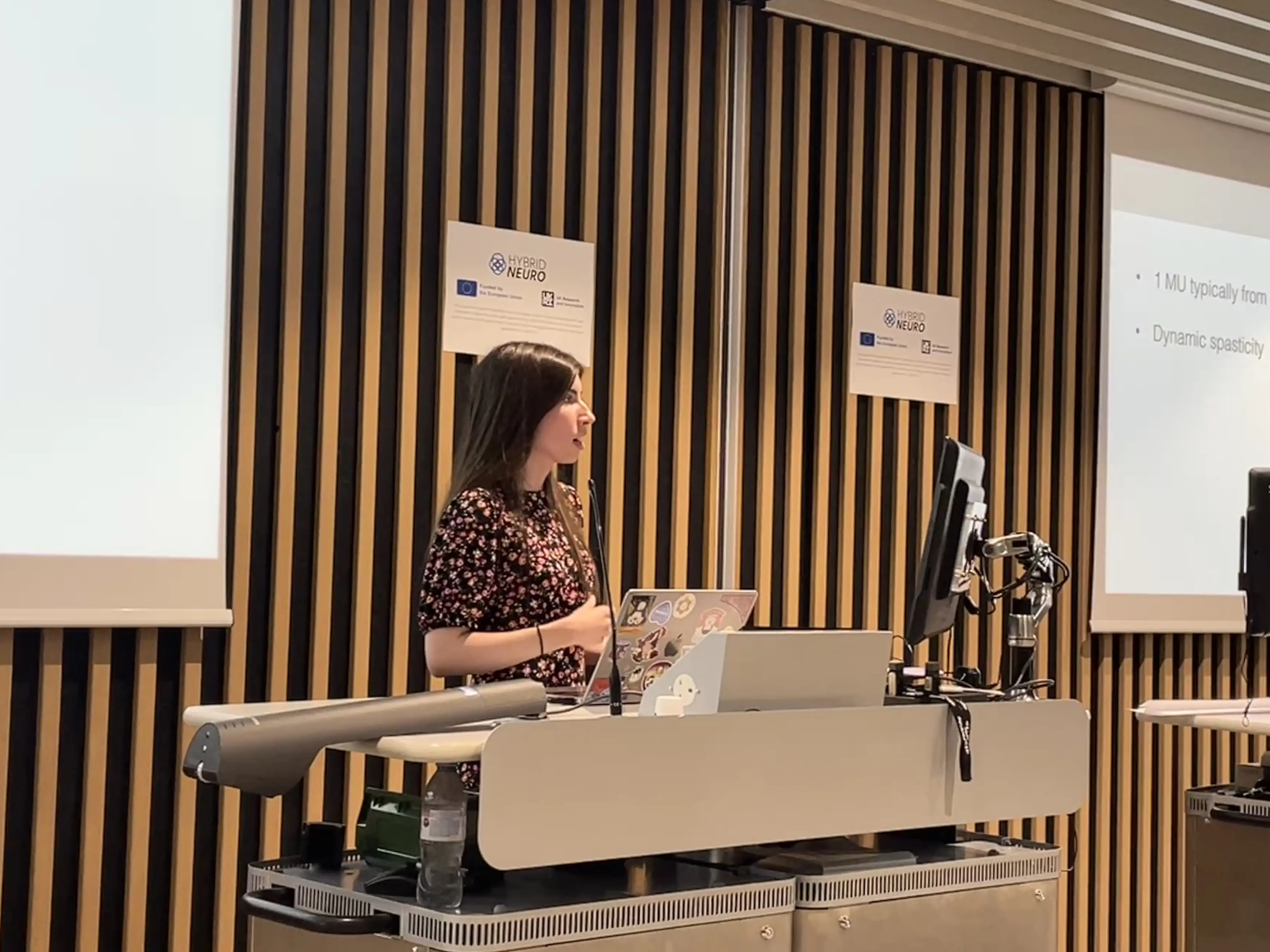
A highlight of the week was the engaging poster session, which created a lively and informal setting for researchers to exchange ideas and insights. The quality of the posters and the discussions they generated were well-developed.
On Thursday afternoon, we had live demonstrations of Imperial's state-of-the-art Multi-limb Virtual Environment, fondly referred to as Dr Octopus, expertly led by Fabbio Tatti and Hector Cervantes Culebro. Attendees experienced what it's like to have additional limbs to improve balance and coordination. They also interacted with an immersive virtual environment through advanced haptic feedback systems and experimented with real-time myoelectric decoding using a neural interface wristband to control a computer game.
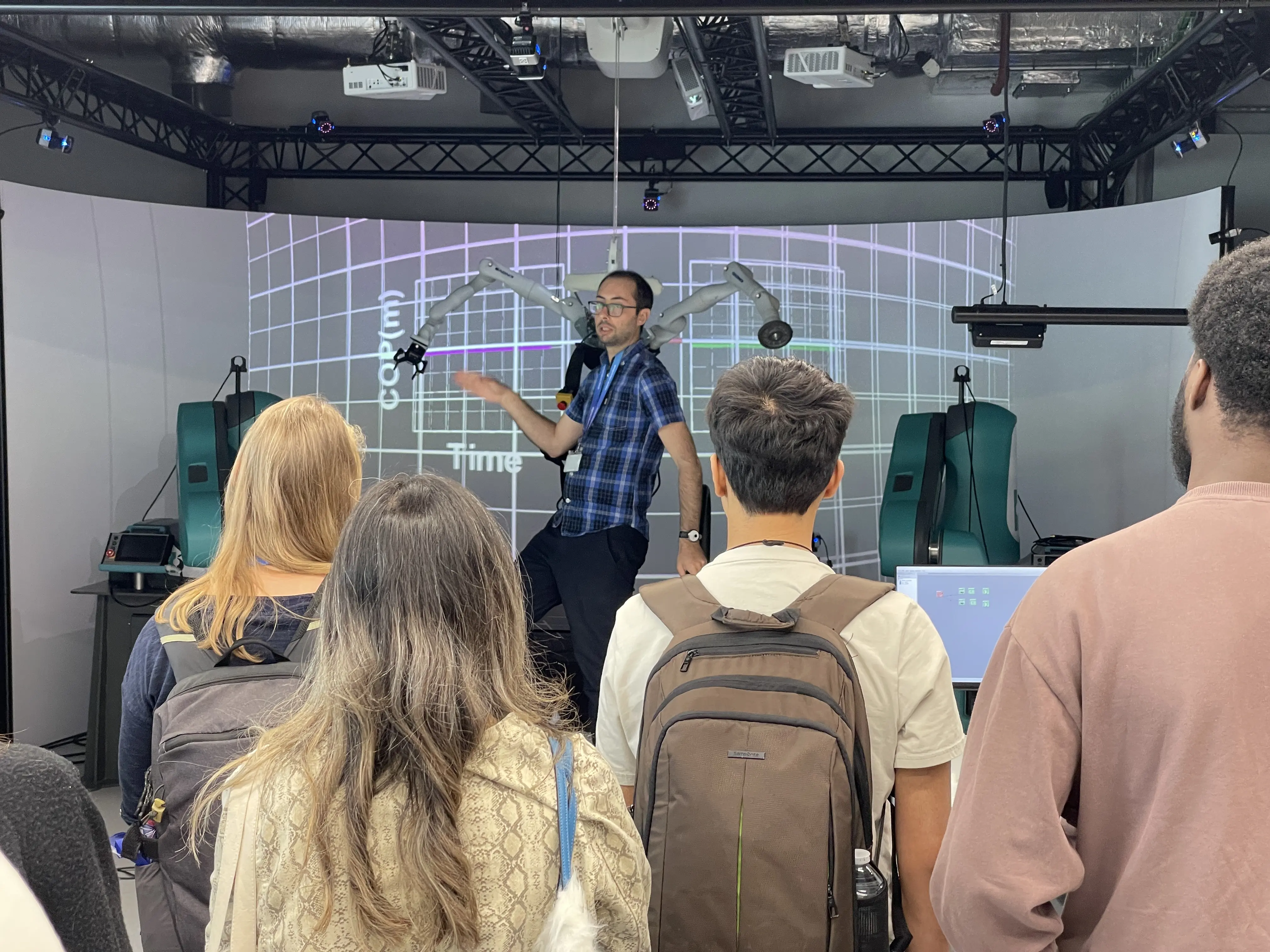
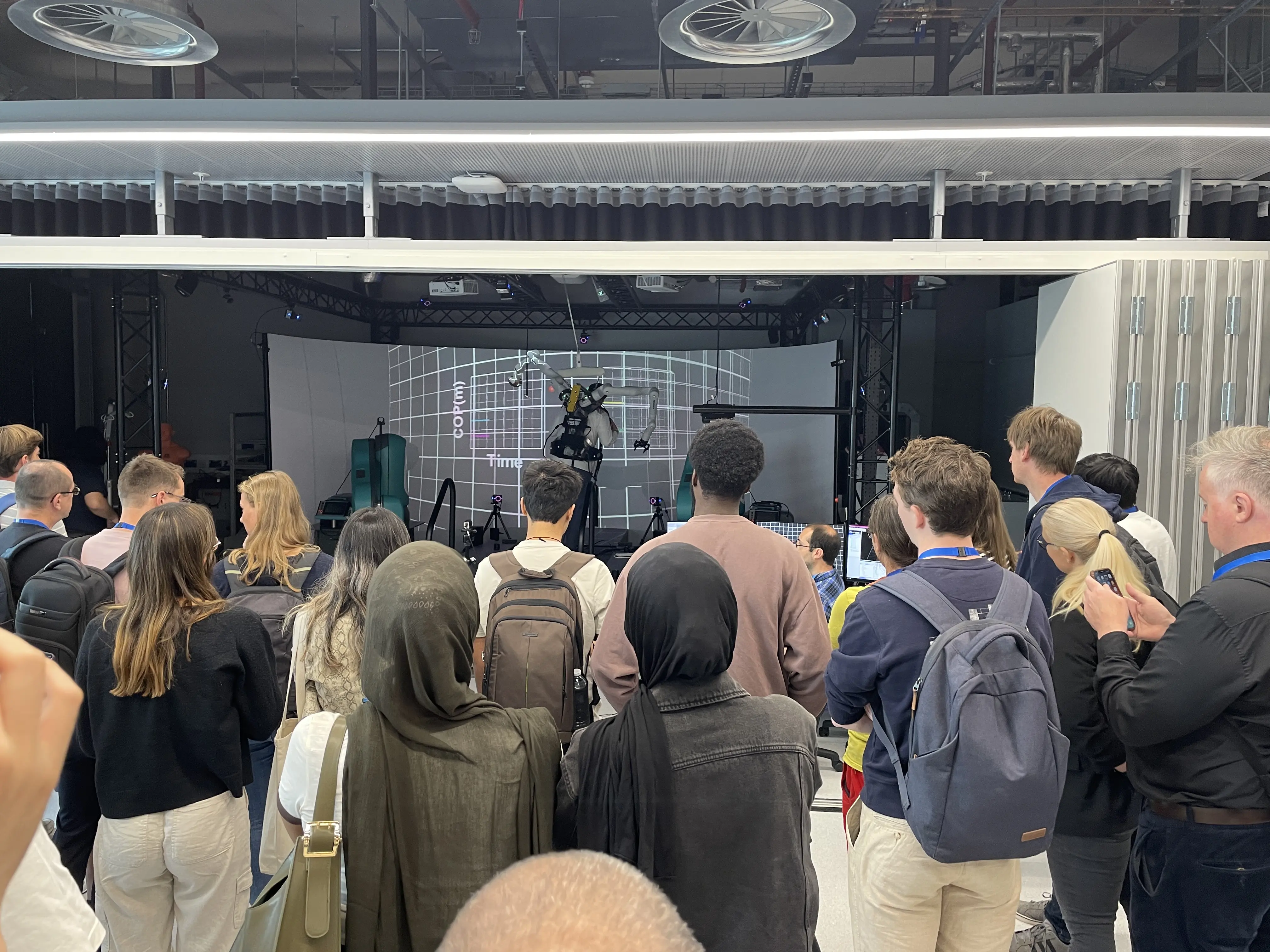
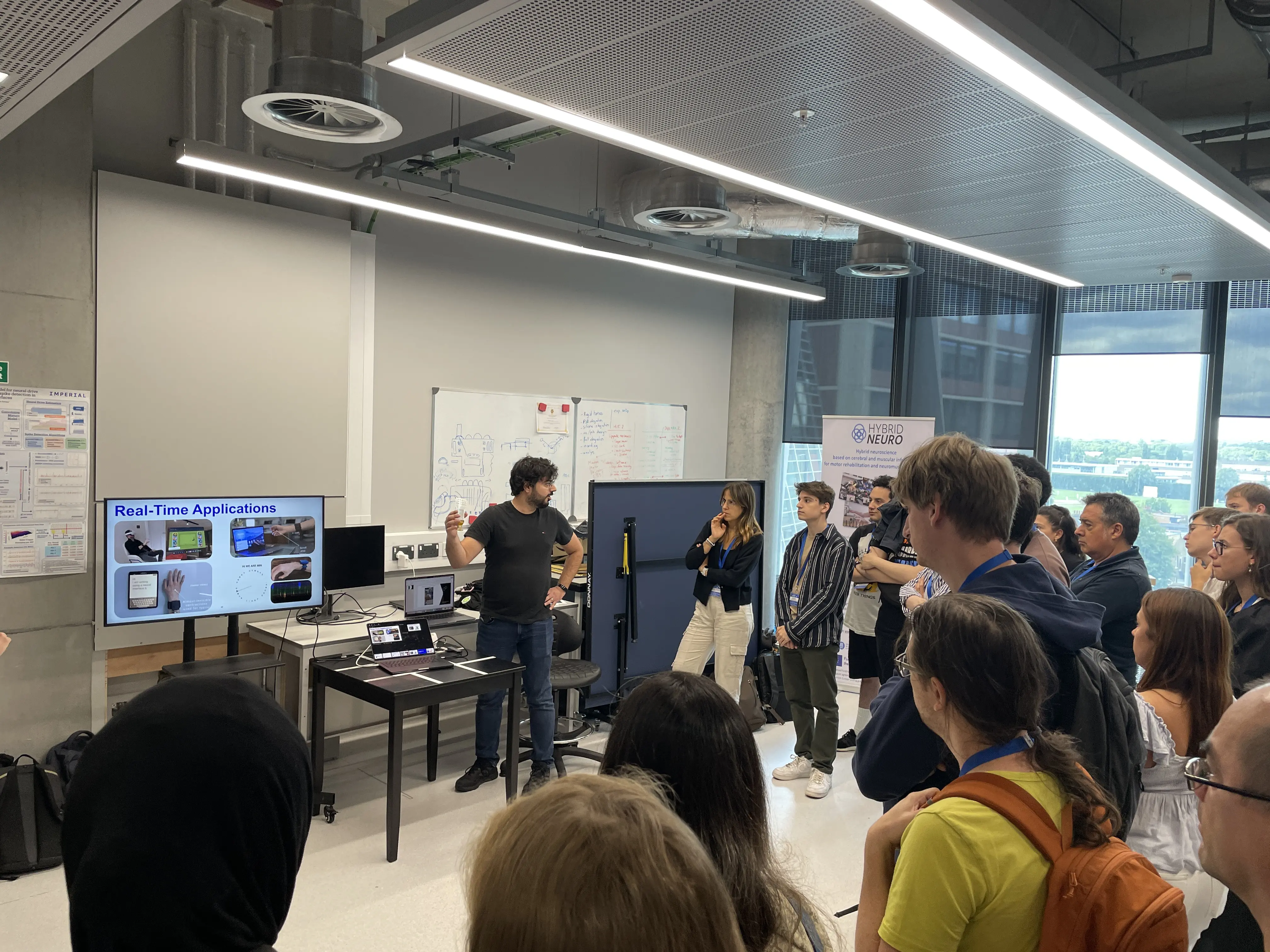
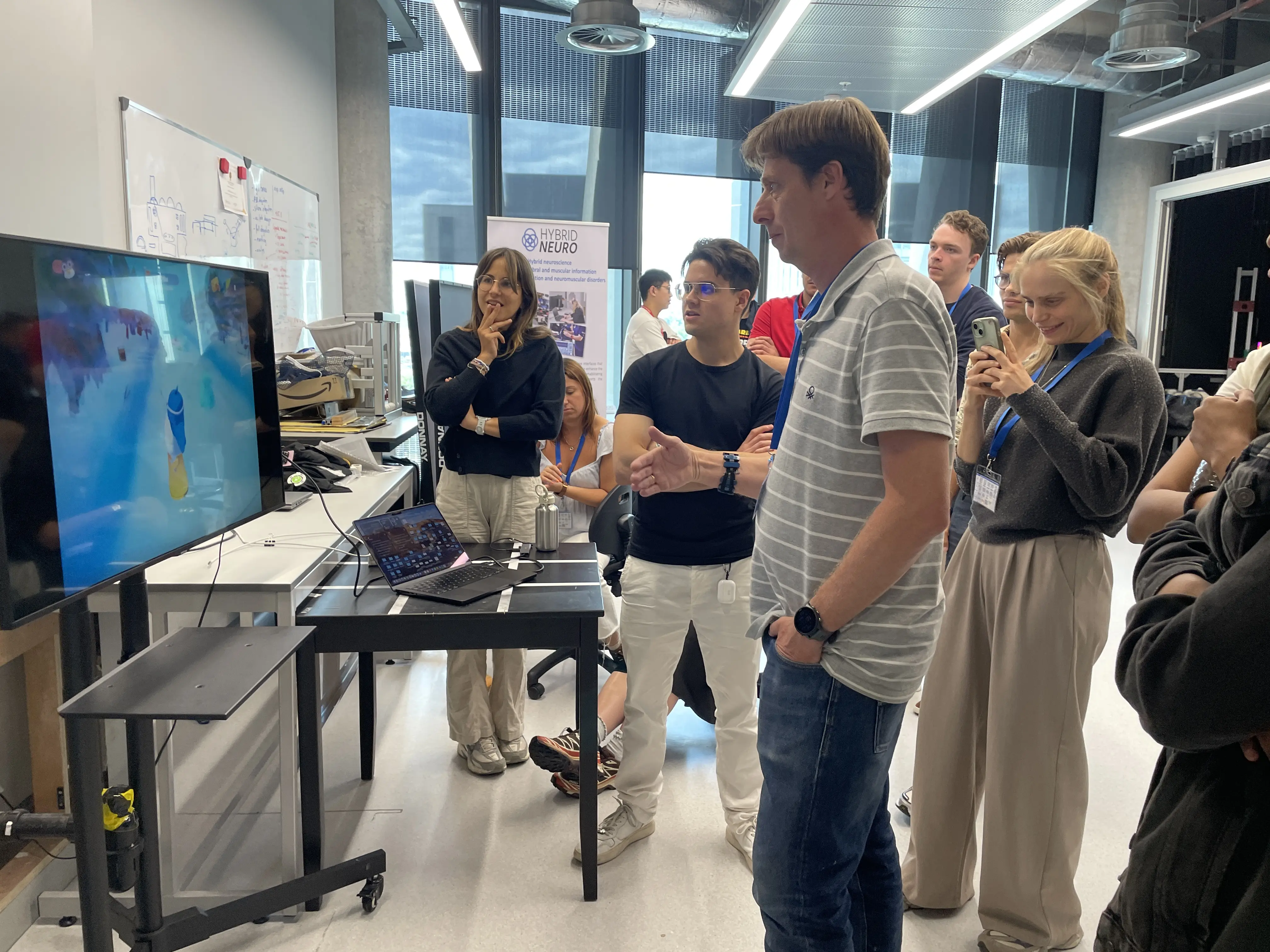
Beyond the academic programme, participants enjoyed a rich social and cultural experience. Evening activities included a walking tour of central London, a visit to the Sky Garden-the UK's highest public garden-for panoramic views of the city, and a scenic river cruise along the Thames to see iconic landmarks like Big Ben, all during a London's hottest day of the year.

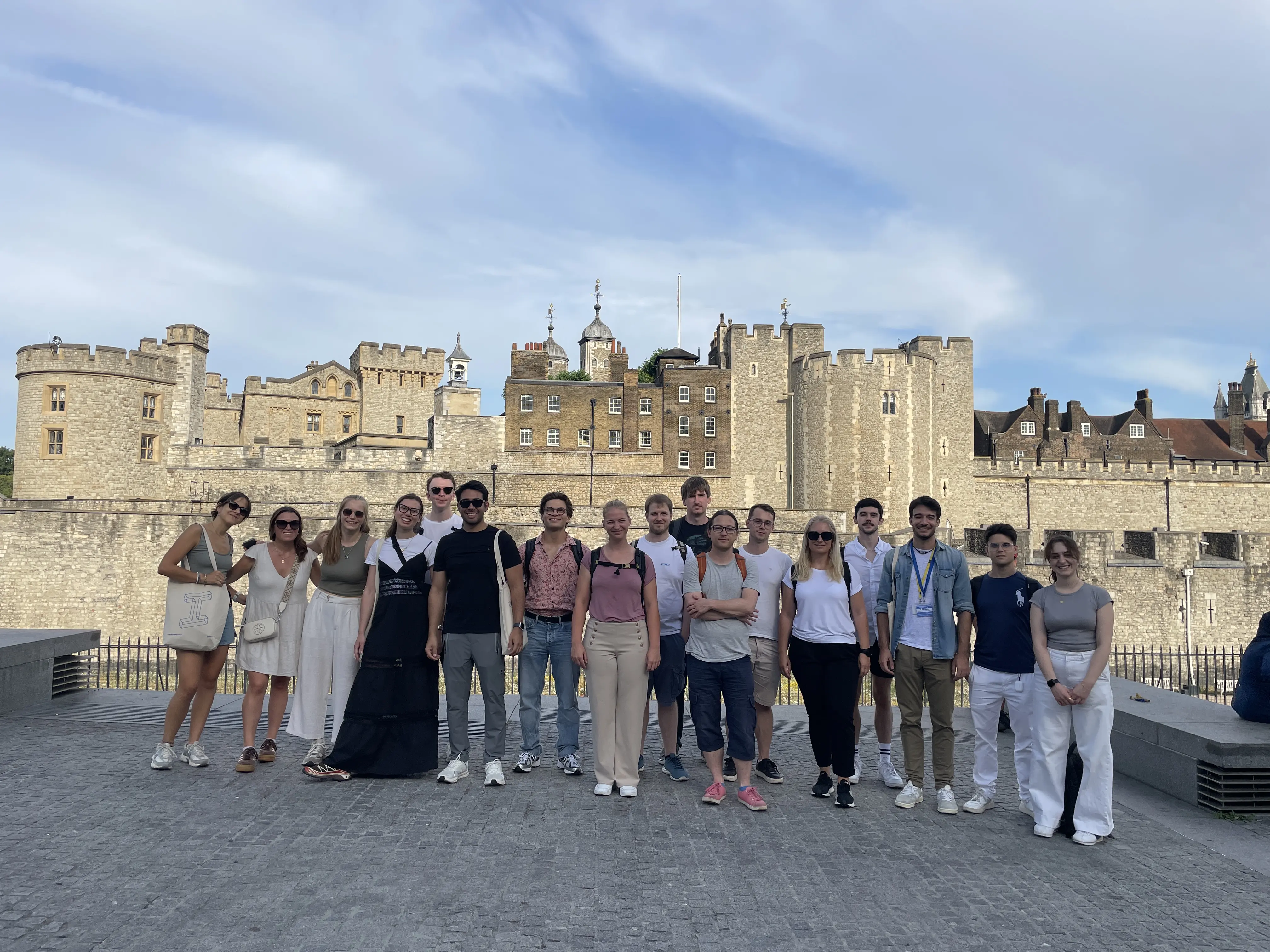
Our final day focused on the commercialisation of academic innovation. We had inspiring presentations from young entrepreneurs and business leaders, who shared key insights into the challenges and opportunities in technology transfer. We also introduced our legacy platform, the HybridNeuro Hub, to our audience, a significant milestone for our community. You can read more about this extra special day here: HybridNeuro Hub Day in London.
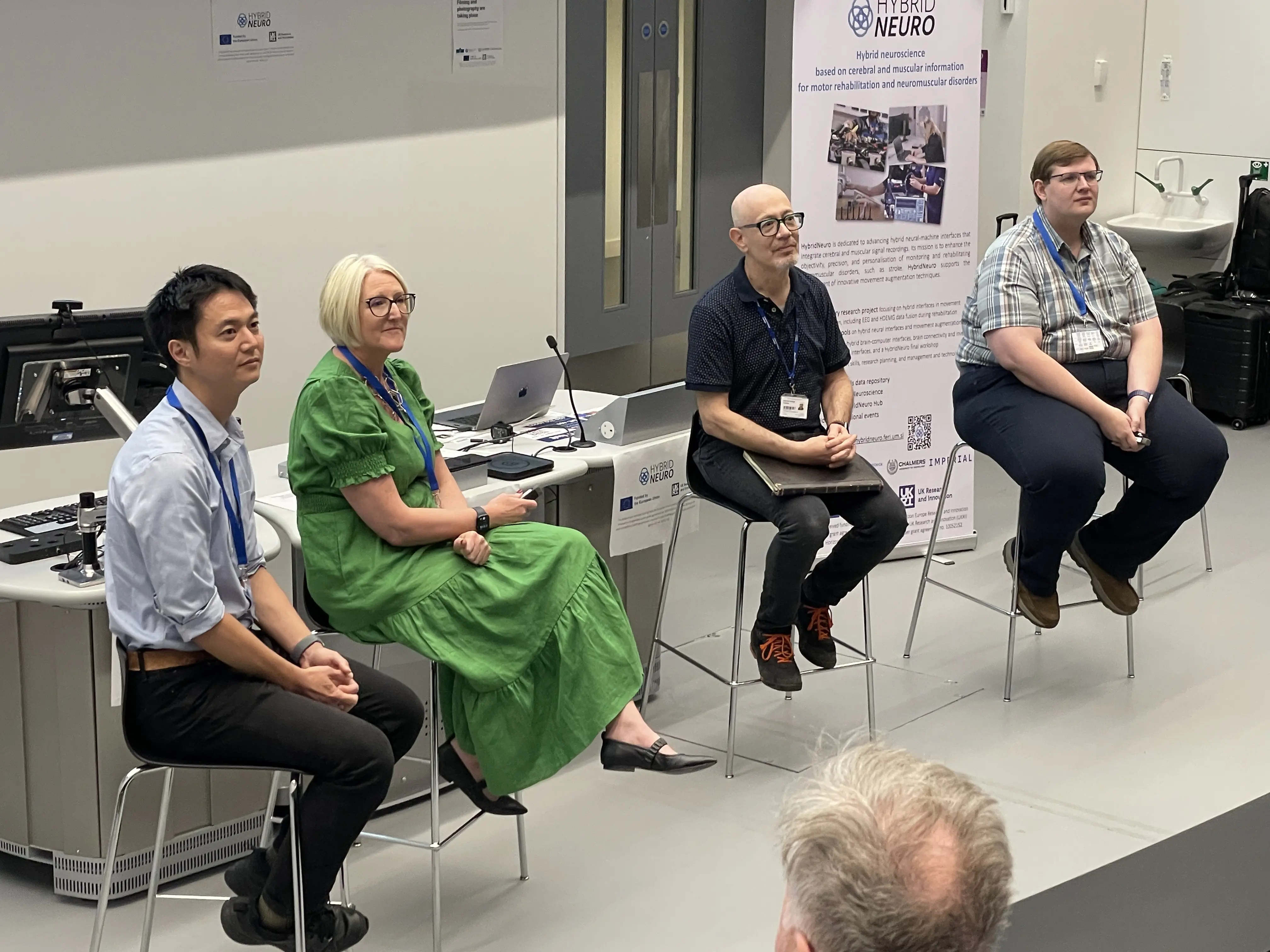
The HybridNeuro Summer School on Human Interfacing and Augmentation was a tremendous success, offering a mix of academic learning, technological exploration, and community building. We extend our heartfelt thanks to all speakers, participants, and organisers who contributed to making this event both memorable and impactful.
